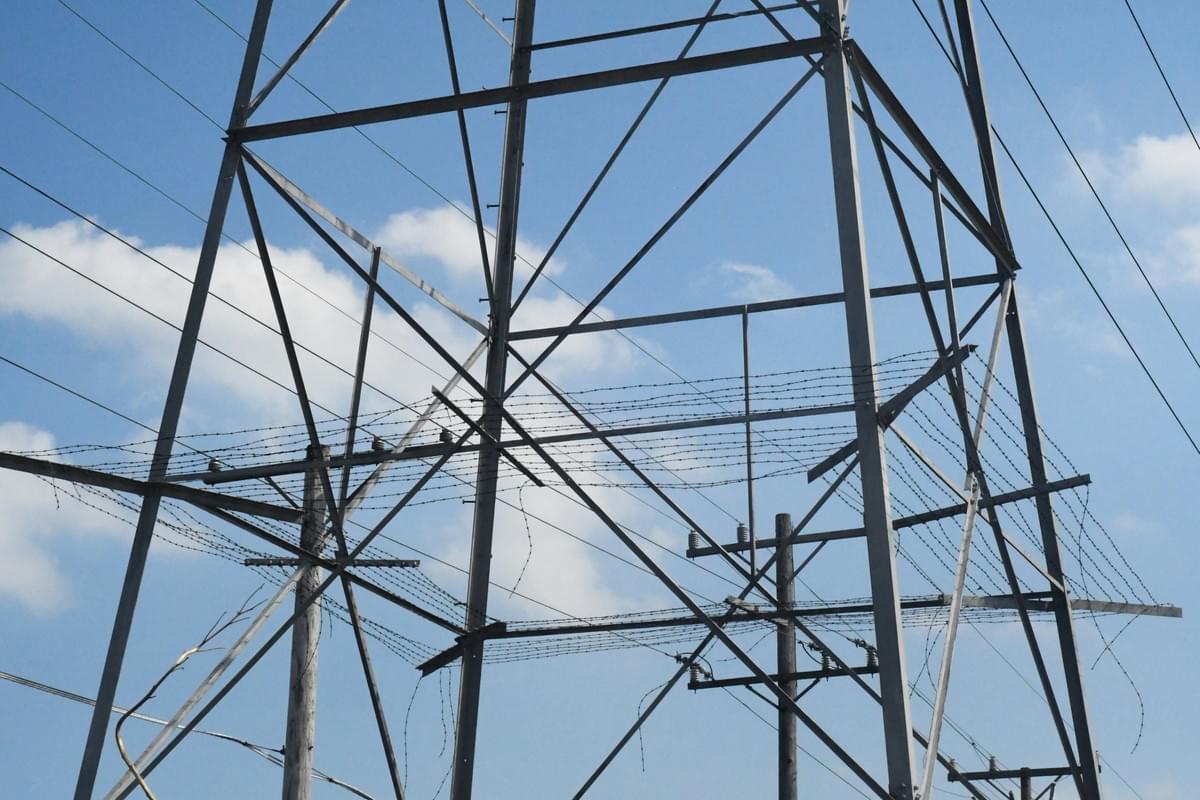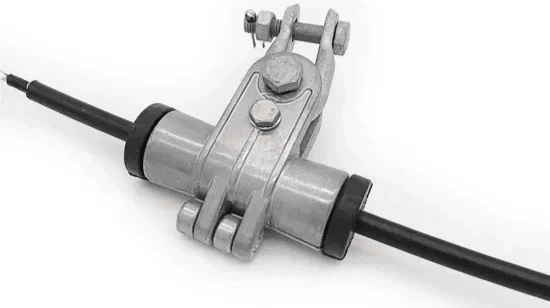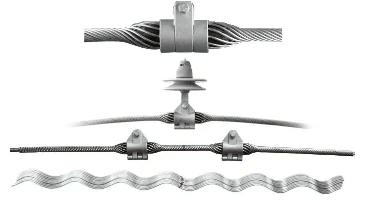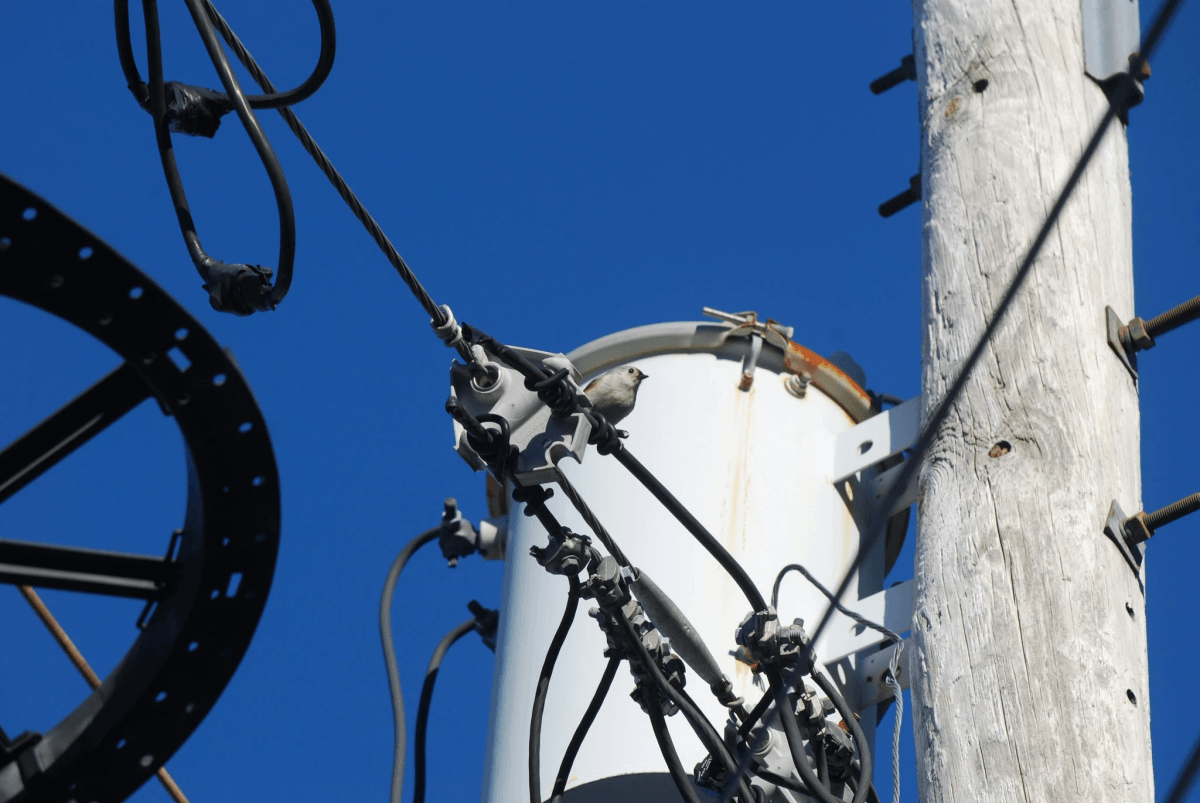Introduction

In the world of engineering and construction, the guy wire clamp plays a pivotal role in ensuring structural stability and safety. These unsung heroes are often overlooked, yet they are essential for securing guy wires that support various structures like towers and poles. Understanding how these clamps work, along with the journey of the guy wire itself, can dispel common myths and lead to safer installations.
Understanding the Guy Wire Clamp
A guy wire clamp is a specialized device designed to secure guy wires tightly to their anchor points or supporting structures. By firmly holding these wires in place, clamps contribute significantly to the overall stability of tall structures such as telecommunication towers or utility poles. Without proper understanding and usage of guy wire clamps, engineers risk compromising structural integrity.
The Journey of the Guy Wire
The journey of a guy wire begins with its installation, where it is anchored into the ground or attached to a structure for support. As it spans distances and endures environmental stresses, it relies heavily on components like clamps for reinforcement along its path. This journey is not only about physical distance but also about understanding how each element works together in harmony.
Common Myths About Guy Wires
There are several misconceptions surrounding guy wires that can lead to confusion among those unfamiliar with them. For instance, many people wonder: Is it guy or guide wire? This simple question often leads down a rabbit hole of terminology that can baffle even seasoned professionals in the field. Additionally, myths surrounding their installation techniques raise concerns about safety—questions like “How do you secure a guy wire?” frequently arise due to misunderstandings about best practices.
What is a Guy Wire Clamp?

When it comes to the world of guy wires, a guy wire clamp plays an essential role in ensuring stability and safety. These clamps are designed to secure guy wires to various structures, providing necessary tension and support. Understanding what a guy wire clamp is can help clarify its importance in the broader context of engineering and construction.
Definition and Function
A guy wire clamp is a specialized device used to attach or secure a guy wire to its anchor point or structure. Its primary function is to maintain tension in the wire, which helps stabilize towers, poles, and other vertical structures against lateral forces such as wind. Without effective clamps, the integrity of these structures could be compromised, leading to potential failures.
Types of Guy Wire Clamps
There are several types of guy wire clamps available on the market, each designed for specific applications or environments. Common variations include single-bolt clamps, double-bolt clamps, and adjustable clamps that allow for fine-tuning of tension levels. By understanding these different types of clamps, engineers can select the most appropriate option based on their project's unique requirements.
Importance in Structural Stability
The importance of guy wire clamps cannot be overstated when it comes to structural stability. Properly secured guy wires help distribute loads evenly across towers and poles, preventing undue stress on any single point. This distribution is crucial for maintaining balance and ensuring that structures can withstand environmental challenges without tipping over or collapsing.
Is it Guy or Guide Wire?

When it comes to the terminology surrounding guy wires, confusion often reigns supreme. Many people wonder, Is it guy or guide wire? The truth is that while both terms are used in various contexts, guy wire is the accurate term for the cables that stabilize structures like towers and poles. This distinction may seem trivial, but clarity in language can significantly impact understanding and communication within engineering fields.
Clarifying the Terminology
To clarify, a guy wire refers specifically to a tensioned cable designed to support and stabilize structures by anchoring them to the ground or other surfaces. In contrast, guide wire typically refers to a different application—often in medical or navigation contexts—where precision guidance is needed. Understanding this distinction helps ensure that when discussing guy wire clamps and their applications, everyone is on the same page about what we’re actually talking about.
Historical Context
The term guy has its roots in nautical language, where it originally referred to ropes used on ships to secure masts and sails. Over time, this terminology found its way into engineering as structures like telecommunication towers began using similar tensioned cables for stability—hence the birth of the “guy wire.” As we explore why they call it a guy wire today, it's fascinating how historical context shapes our modern vocabulary around structural components like guy wire clamps.
Practical Implications
Understanding whether we’re discussing a guy or guide wire has practical implications for professionals working with structural supports. For instance, using appropriate terminology ensures that everyone involved—from engineers to construction workers—understands their roles when securing a guy wire effectively. Additionally, knowing the right terms can help prevent costly mistakes during installations and maintenance of components such as anchors versus guy wires; after all, selecting the right equipment can make all the difference in ensuring safety and stability.
Why Do They Call it a Guy Wire?

When it comes to the term guy wire, many people scratch their heads in confusion, pondering its origins and significance. The name might sound quirky, but it has a solid foundation rooted in history and language. Understanding why we call it a guy wire can clear up misconceptions and enhance our appreciation of its role in structural stability.
Etymology of the Term
The term guy traces back to the French word guie, meaning a guide or support. Over time, this evolved into the English usage we see today, where guy refers to any supporting wire or cable that stabilizes structures like towers or poles. So when we ask, “Is it guy or guide wire?” remember that “guy” is indeed the correct term steeped in historical context.
Cultural References
The use of guy extends beyond engineering; it has permeated popular culture and everyday language as well. In various contexts, calling someone a guy can denote camaraderie or familiarity—think about how you might refer to your friends casually! This cultural resonance adds an informal charm to an otherwise technical term while reinforcing its role as a reliable support system in engineering.
Usage in Engineering
In engineering circles, the term is more than just nomenclature; it's essential for understanding components like guy wire clamps and their function within infrastructure projects. Guy wires are crucial for maintaining stability in structures exposed to environmental forces like wind and gravity—without them, towers would be wobbling messes! When discussing how do you secure a guy wire, it's vital to recognize that these clamps play an integral role by ensuring everything remains taut and safe.
How Do You Secure a Guy Wire?

Securing a guy wire is crucial for ensuring the stability and safety of structures like towers and poles. Proper installation techniques can prevent issues like sagging or even catastrophic failures, making it essential to understand how to effectively use guy wire clamps and other components. This section will delve into best practices, necessary tools, and common pitfalls to avoid when securing a guy wire.
Best Practices for Installation
When installing a guy wire, it's vital to follow established best practices to ensure optimal performance. First, always ensure that the angle of the guy wire is appropriate; typically, this should be between 30 to 45 degrees from the ground for maximum stability. Additionally, using high-quality guy wire clamps can significantly enhance the overall strength of your setup—never skimp on this critical component!
Another important practice is to regularly inspect your installations for wear and tear. Over time, environmental factors can weaken both the wires and clamps used in your setup. By performing routine checks and maintenance, you can catch potential issues before they escalate into major problems.
Tools and Techniques
To secure a guy wire effectively, you'll need specific tools designed for installation tasks. These include cable cutters for trimming excess wire length and tensioning devices that help achieve the right tightness without damaging the materials involved. Additionally, having a torque wrench on hand ensures that all connections are tightened appropriately according to manufacturer specifications.
Using proper techniques during installation is equally important; start by anchoring one end of the guy wire securely before extending it outward towards its attachment point. Employing tensioning devices allows you to gradually tighten the cable while monitoring its angle—this ensures that you achieve an optimal balance between tension and structural integrity.
Common Mistakes to Avoid
Even seasoned professionals can make mistakes when securing a guy wire; being aware of these pitfalls can save you time and resources in the long run. One common mistake is neglecting proper tension; if a guy wire is too loose or too tight, it could lead to instability or damage over time. Always double-check your tension levels after installation using appropriate measuring tools.
Another frequent error involves improper placement of anchors—it's crucial that these components are installed in stable soil or concrete structures that can bear loads effectively. Failing to do so may result in anchor failure during adverse weather conditions or heavy loads on the structure above.
Lastly, don’t underestimate the importance of using compatible components such as clamps and suspensions when securing your guy wires! Mismatched parts can lead to unexpected failures down the line; always consult product specifications before proceeding with installations.
What is the Difference Between Anchor and Guy Wire?

When it comes to understanding the structural components of guy wires, distinguishing between anchors and guy wires is crucial. While both play integral roles in maintaining stability, they serve different purposes. Anchors are fixed points that provide resistance against forces acting on the guy wire, while guy wires themselves are tensioned cables that support structures such as poles or towers.
Definitions and Roles
An anchor is a device designed to hold a guy wire securely in place, preventing it from pulling away due to tension or environmental forces. It can be buried underground or installed on solid structures, ensuring that the guy wire remains taut and effective in its role. On the other hand, a guy wire is a cable used primarily for stabilization; it connects the structure to the anchor, providing essential support against lateral loads.
The relationship between anchors and guy wires is symbiotic; without proper anchoring, even the best-designed guy wire clamps would fail to function effectively. The strength of an anchor influences how well a guy wire can perform its job of stabilizing structures like telecommunication towers or electrical poles. Understanding these definitions helps clarify why both components are necessary for safe installations.
Visualizing the Differences
To visualize their differences, imagine a tall tower swaying slightly in strong winds—this movement creates tension on the attached guy wires. These wires pull at their respective anchors, which must withstand this force without budging an inch. Picture an anchor as a sturdy tree root holding firm in soil while branches (the guy wires) sway above; this analogy illustrates how each component interacts within the structural system.
In practical terms, when you secure a guy wire with clamps at various points along its length, those clamps work hand-in-hand with anchors placed strategically around your installation site. The visual representation of this relationship can often be seen in engineering diagrams where arrows indicate tension along cables leading to firmly anchored points below ground level or attached to nearby structures. Such clarity reinforces why knowing what constitutes an anchor versus a guy wire is essential for anyone involved in construction or engineering projects.
Selecting the Right Component
Choosing between different types of anchors and understanding their compatibility with various kinds of guy wires can significantly impact overall stability and safety during installations. When selecting components for your project, consider factors like soil type if using ground anchors or load requirements if opting for wall-mounted options—these details dictate which type will suit your needs best.
Additionally, think about how these components will work together with your chosen clamps during installation; poor compatibility could lead not only to inefficiencies but also increase risks associated with structural failure over time! So whether you're asking yourself Is it guy or guide wire? or pondering How do you secure a guy wire? remember: selecting appropriate materials ensures long-lasting performance while minimizing potential hazards down the line.
Guy Wire Mounting and Accessories

When it comes to guy wire mounting and accessories, the right components can make all the difference in ensuring structural integrity. A well-secured guy wire clamp is essential for maintaining stability, particularly in challenging environments. The various types of clamps and suspensions available help to optimize the performance of guy wires, regardless of whether you’re dealing with telecommunications towers or utility poles.
Essential Clamps and Suspensions
Essential clamps and suspensions play a pivotal role in the effective installation of guy wires. These devices not only secure the wires but also help distribute tension evenly across structures, reducing wear and tear over time. When selecting a guy wire clamp or suspension system, it's crucial to consider factors like load capacity, environmental conditions, and compatibility with existing infrastructure.
Moreover, understanding how to secure a guy wire properly involves knowing which clamps are best suited for your specific application. From adjustable clamps that allow for fine-tuning tension to more robust options designed for extreme weather conditions, there’s a wide variety available. Ultimately, investing in high-quality clamps ensures that your installations remain safe and effective for years to come.
Spotlight on Spark Electronic's ADSS Suspension Clamp
One standout option in the world of guy wire mounting is Spark Electronic's ADSS suspension clamp. This innovative product provides superior support for aerial cables while minimizing stress on the cable itself—perfectly aligning with best practices when securing a guy wire. Designed specifically for All-Dielectric Self-Supporting (ADSS) applications, this clamp offers exceptional durability against harsh weather elements.
The unique design features an easy-to-install mechanism that simplifies the mounting process without compromising stability or safety. Notably, its versatility makes it suitable not just for telecommunications but also other industries requiring reliable cable support systems—answering questions like Is it guy or guide wire? with clarity as you navigate your project needs. With Spark Electronic's ADSS suspension clamp at your disposal, you can confidently enhance both performance and longevity in your installations.
Enhancing Stability with Accessories
While selecting high-quality clamps is fundamental, enhancing stability with additional accessories can take your installations to another level altogether. Accessories such as tensioning devices and protective covers provide added security against environmental challenges while ensuring that your guy wires perform optimally under stress. Understanding what is the difference between anchor and guy wire can inform decisions about which accessories will best complement your setup.
For example, using specialized protective sleeves on cables can help prevent abrasion from external elements while maintaining proper tension through strategically placed anchors or additional supports—essentially creating a holistic approach to structural stability through thoughtful design choices around guy wire mounting and accessories. Remember: a well-thought-out installation means fewer headaches down the road!
Conclusion

As we wrap up our exploration of guy wire clamps, it’s crucial to recognize their vital role in ensuring structural integrity. From understanding the differences between guy wires and guide wires to the various mounting accessories available, we’ve navigated a landscape rich with technical nuances. Whether you’re an engineer, a DIY enthusiast, or just curious about why they call it a guy wire, knowing how to secure a guy wire properly is essential for safety and stability.
Key Takeaways on Guy Wire Clamps
Guy wire clamps are indispensable components in the world of structural engineering and telecommunications. They provide the necessary support and tension required to stabilize structures like towers and antennas effectively. Remember that understanding the difference between anchor and guy wire is crucial for selecting appropriate components; both play unique roles in ensuring stability.
Future Considerations in Guy Wire Technology
Looking ahead, advancements in materials science may lead to more durable and lightweight options for guy wire clamps and accessories. Innovations could also enhance safety features, making installations even more reliable while reducing maintenance needs over time. As technology evolves, staying updated on best practices for securing a guy wire will be essential for engineers and technicians alike.
Final Thoughts on Safe Installations
In conclusion, safe installations hinge not only on using high-quality components but also on adhering to best practices when securing your guy wires. Avoid common mistakes by following guidelines related to clamps and suspensions; this will ensure that your structures remain stable under various conditions. Ultimately, whether you're dealing with simple installations or complex setups involving multiple guy wires, prioritizing safety will always be paramount.

